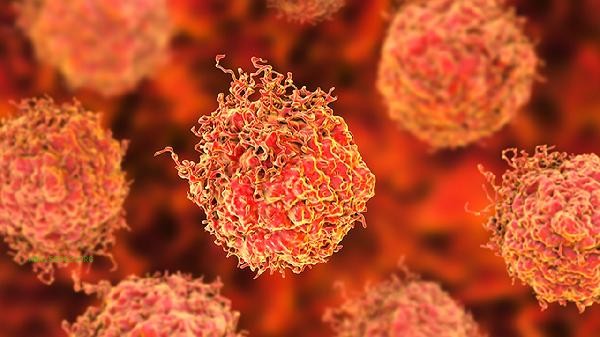1.2% of eosinophils usually do not directly indicate cancer, and may be caused by factors such as allergic reactions, chronic inflammation, myeloproliferative disorders, endocrine disorders, or drug reactions.

1. Allergic reactions:
eosinophils are involved in the process of allergic reactions, and their values may slightly increase when exposed to pollen, dust mites, or specific foods. This type of condition is often accompanied by symptoms such as skin itching and urticaria, which can be relieved by antihistamines such as loratadine. It is necessary to combine allergen testing to determine the cause.
2. Chronic inflammation:
Chronic inflammatory diseases such as rheumatoid arthritis and ulcerative colitis can stimulate the release of eosinophils from the bone marrow. The patient may experience joint swelling and persistent low-grade fever, and diagnosis should be assisted by C-reactive protein and imaging examinations. Treatment should focus on controlling the primary disease.
3. Abnormal bone marrow hyperplasia:

Bone marrow lesions such as polycythemia vera may lead to an increase in eosinophils, which is often accompanied by dizziness and skin flushing. Diagnosis should be made through bone marrow puncture and JAK2 gene testing, and interferon or hydroxyurea treatment should be used if necessary.
4. Endocrine factors:
hypothyroidism or pituitary dysfunction may affect granulocyte differentiation, causing numerical fluctuations. Patients are prone to fatigue and are sensitive to cold, so it is necessary to check their thyroid hormone levels. Supplementing with levothyroxine sodium can improve symptoms.
5. Drug effects:
Long term use of estrogen or glucocorticoids may interfere with blood routine results, and the values often return to normal after discontinuation of medication. It is recommended to consult a doctor before re examination to see if the medication plan needs to be adjusted. When a mild increase in eosinophils is found, it is recommended to have a blood routine check 1-3 months later to observe dynamic changes. It is necessary to maintain a balanced diet in daily life, supplement vitamin B12 and folic acid in moderation, and avoid overexertion. If it continues to rise or is accompanied by symptoms such as weight loss and bone pain, bone marrow biopsy should be performed to rule out hematological diseases such as chronic myeloid leukemia. Regular sleep and moderate exercise help maintain the stability of the immune system.









Comments (0)
Leave a Comment
No comments yet
Be the first to share your thoughts!